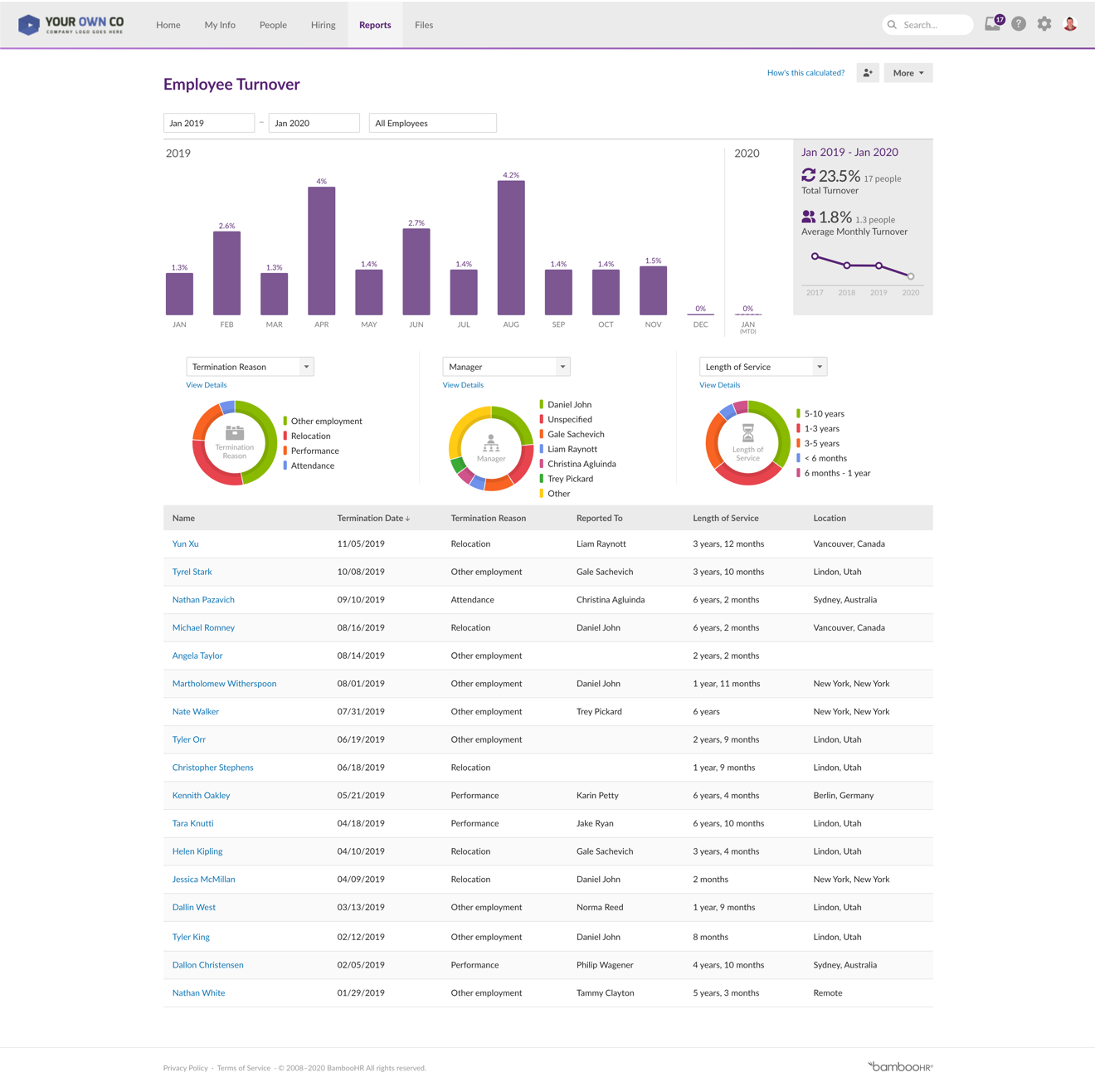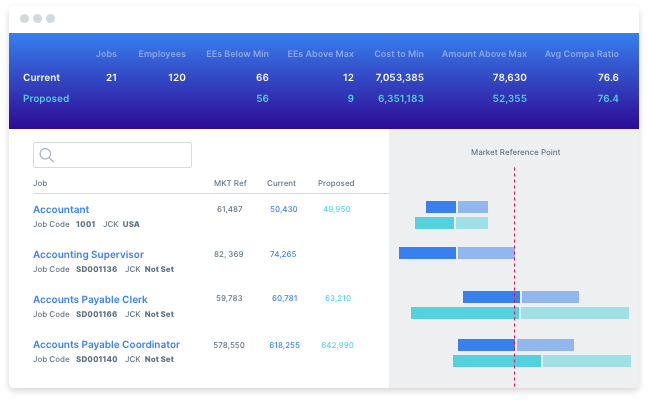A Manager’s Guide for Responding to High Employee Turnover
Does it feel like the turnover rate at your organization is currently through the roof? You’re not alone. Software Advice surveyed over 300 recruiters this July and found that 51% of them say the number of job openings that they’re actively recruiting for is higher than average.
In fact, there have been many recent reports of record-high levels of turnover. And as we all know, it can be a challenge to keep projects moving along while searching for the right candidate to backfill an open role (not to mention multiple of them). Plus, turnover can negatively affect your bottom line—some sources estimate that losing one employee can cost you 1.5 to 2 times their salary.
If you’re a business owner or an HR professional who can relate to this struggle, here’s the good news: You can maintain a positive and productive workplace when your headcount is lower than average, and we’re here to help you do that.
Here’s what we’ll cover:
But first, what can cause high turnover rates?
There are a lot of reasons why employees leave their jobs, from going back to school to moving across the country to retirement. Turnover is a normal part of all workplaces—there’s only cause for concern when your turnover rate is too high.
Tip: Average turnover rates vary from industry to industry, so while it’s difficult to pinpoint a normal range, you can use past turnover data to determine if your current rate is higher than usual. HR analytics software can help you pull and compare those numbers with ease.
This is because a high turnover rate can hint at deeper issues within your workplace culture. According to the Society for Human Resources (SHRM), there are four main drivers of voluntary turnover.
Employee dissatisfaction: These kinds of exits are related to the employee experience. For example, if an employee feels like they have no path to career growth at your organization, they may decide to leave.
Competitive offers: Employees may leave for an opportunity with a higher salary, better benefits, or flexible working environment.
Negative experiences: This kind of departure happens in response to a negative experience or situation at work, such as a conflict with a difficult coworker or an instance of harassment.
Planned life changes: Employees may plan to leave their workplace if they are moving, retiring, or their family responsibilities change.
Understanding why employees are leaving your workplace is essential when it comes to planning out an appropriate response strategy. For instance, if employees are primarily citing more competitive compensation as the reason for their departure, you can push for market adjustments as a retention incentive.
Next, we’ll cover three strategies for determining why employees are leaving your organization.
How to find out what’s causing turnover at your organization
Here are three tactics you can use to pinpoint the main drivers of turnover at your organization.
1. Hold exit interviews
What are exit interviews? Exit interviews are conversations that HR professionals hold with departing employees that have two main purposes: 1) to learn how your organization can improve itself, and 2) to ensure departing employees leave feeling positive about their contributions and tenure.
Because exit interviews provide an opportunity for employees to give candid feedback about why they’re leaving your organization, we recommend making them a formal step in your offboarding process for all departing employees—especially during times of high turnover.
As soon as an employee gives notice of their resignation, an exit interview should be scheduled for a day or two before their last day of work. This responsibility is usually handled by a human resources professional, but you can also hire a third party to conduct exit interviews. Make sure the team member who conducts the interview records the session, as that will make it easier to refer back to when trying to identify patterns in the reasons why employees are leaving.
Here are a few questions you can ask during exit interviews:
Do you feel like your manager gave you what you needed to succeed?
What prompted you to start looking for a new opportunity?
Is there anything we could have done that would have prevented you from leaving?
What suggestions or feedback do you have for our organization?
2. Conduct exit surveys
Much like an exit interview, the idea behind an exit survey is to capture candid feedback from departing employees about their experience with your organization and company culture.
We suggest conducting both an exit interview and survey, but in the case that the departing employee does not want to sit for an interview, a survey is an excellent substitute. Plus, surveys are more reliable for recordkeeping than interviews because the answers are recorded as is, rather than through the interpretation of the interviewer.
When building your exit survey, the interview questions in the section above are a great place to start, but you should include a variety of questions about different aspects of the employee experience and their motivation for leaving. Ask for their feedback on their role and responsibilities, their manager and teammates, and your organization’s culture, as well as their compensation and benefits.
You can use survey software to conduct your exit surveys. Some tools in this category will analyze the results for you, making it easier to find patterns in the reasons why employees leave.
3. Use HR analytics software for an accurate look at employee attrition data
HR analytics software is a category of business intelligence tools designed to help HR professionals uncover important insights in their data and make better, data-driven decisions with their workforce.
You can use an HR analytics tool to collect data related to employee attrition, such as your overall employee turnover rate, voluntary and involuntary turnover rate, average employee tenure, and employee retention rate.
These tools take on the task of analyzing your data for you, so your team can focus on making decisions based on the insights presented to you.

A dashboard of turnover data from BambooHR (Source)
If your business is small (fewer than 500 employees), you likely do not need HR analytics software. Instead, you can use a simple reporting tool to record metrics such as average turnover rate or employee tenure.
How to build a response strategy that directly addresses sources of turnover at your organization
Putting the strategies above into practice will give you some clues about which areas of your company culture and employee experience can be improved upon. Next, it’s time to take your turnover insights and plan a course of action to address them.
Below, we’ll walk you through different tactics you can try as a part of your retention strategy. Each tactic corresponds with a different driver of turnover so you can tailor your approach to your organization’s needs.
1. Update your benefits offerings
If employees are leaving for opportunities with better benefits, this could be a sign that your organization needs to update your current offerings in order to keep up with competitors.
Here are three benefits you should consider offering if you don’t already:
Mental health support: This includes behavioral health insurance that covers mental health costs as well as employee assistance programs (EAPs). For more information, check out our guide on “How To Support Mental Health in the Workplace.”
Parental leave and childcare: Simply put, if your business does not provide flexibility and support to employees with caregiving responsibilities, they will look for opportunities that do.
Flexible working hours and environment: Earlier this year, Software Advice surveyed over 900 small-business employees and found that 86% of those currently working from home want to continue to work remotely at least part of the time.
2. Adjust compensation to match or beat market averages
Ideally, your HR team should research the average market rates for different positions within your company at least once a year. But if it’s been awhile since employees have received a market adjustment to their wages, you should campaign for an increase where necessary.
If you find that one department is losing talent for higher paying opportunities more than others, start there. You can find the average salary rate for different positions in your industry on websites such as PayScale and Glassdoor.
Tip: Some HR software tools collect compensation data via surveys, so it’s easy to compare what you’re paying your employees to the market average.

A salary report for different positions includes the market rate from PayScale (Source)
3. Address areas of your employee experience that need improvement
If employees are leaving due to your company culture, you’ll need to take steps to improve the employee experience at your workplace. Use the insights gathered through exit interviews and surveys to determine which areas of the employee experience need improvement. You may find that your organization could benefit from providing more learning and development opportunities, creating a mentorship program, or kicking off an employee recognition initiative.
Tip: For more insights into what employees want out of the employee experience and how to achieve that, check out this related content: “Prepare Your Business for These 4 Employee Trends.”
Further, if there are work-related issues involving harassment or inappropriate behavior, don’t ignore them. Ask the affected employee if they’d like to file a formal complaint. If applicable, follow up with a performance improvement plan for the offending employee. If necessary, provide training that will empower employees to report inappropriate or unjust treatment.
There are many courses just a quick Internet search away that offer guidance for conflict resolution, harassment, and unfair treatment in the workplace. For starters, you can browse the many courses available from the Compliance Training Group.
Video summary: 3 tips for… navigating times of high turnover
For a summary of the advice in this guide, watch this quick video on navigating times of high turnover:
Find more helpful content on our blog
Managing the modern workplace can be challenging, but it’s easier when you’re presented with clear advice backed up by research. On our blog, you’ll find content that addresses a variety of workplace challenges so that you can feel confident and prepared for whatever comes your way.
Check out this related reading next:
Survey methodology
The Software Advice Recruiting Strategy Survey was conducted in July 2021. We collected 300 responses from workers with recruiting responsibilities at U.S. employers. The goal of this survey was to learn how much companies are struggling with recruiting and hiring, and what solutions they’ve considered to improve recruiting and hiring outcomes.
The Software Advice HR in the New Era Survey 2021 was conducted in January 2021. We surveyed workers at U.S. small businesses with two to 500 employees. The responses are a representative sample (by age and gender) of the U.S. population. We worded the questions to ensure that each respondent fully understood the meaning and the topic at hand.
Note: The applications selected in this article are examples to show a feature in context and are not intended as endorsements or recommendations. They have been obtained from sources believed to be reliable at the time of publication.